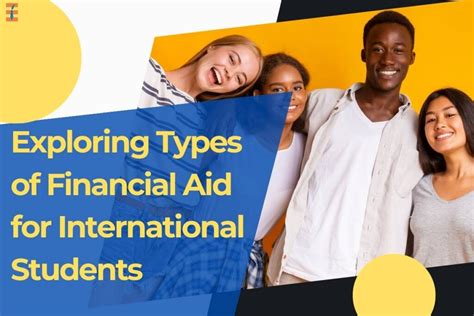Financial aid can defray the substantial costs associated with higher education, making it more accessible for students from all backgrounds. The Channel Islands offer a range of financial aid options to assist students in pursuing their academic aspirations.

Types of Financial Aid Available
- Grants: Free money that does not have to be repaid.
- Scholarships: Merit-based awards that recognize academic achievements, talents, or community involvement.
- Loans: Money borrowed from the government or a lender that must be repaid with interest.
- Work-study: Part-time employment opportunities that allow students to earn money while attending school.
Eligibility Criteria
To qualify for financial aid, students must:
- Be enrolled at least half-time in an eligible degree or certificate program.
- Have a high school diploma or equivalent.
- Not have defaulted on any previous federal student loans.
- Demonstrate financial need (for grants and loans).
Application Process
To apply for financial aid, students must complete the Free Application for Federal Student Aid (FAFSA). The FAFSA collects information about the student’s and their family’s income, assets, and household size. This information is used to determine the student’s Expected Family Contribution (EFC) and their eligibility for financial aid.
Grant Programs
Federal Pell Grant: Provides up to $6,895 per year to undergraduate students with the highest financial need.
Federal Supplemental Educational Opportunity Grant (FSEOG): Provides grants of up to $4,000 per year to students with exceptional financial need.
Cal Grant: California state grant program that provides up to $6,154 per year to eligible students.
Scholarship Programs
Channel Islands College Foundation Scholarships: Offers a wide range of scholarships based on academic merit, financial need, and special circumstances.
University of California Regents Scholarship: Full-tuition scholarship awarded to students with exceptional academic achievements.
Horatio Alger National Scholarship: Scholarship program for students who have overcome adversity and achieved success.
Loan Programs
Federal Direct Stafford Loans: Loans borrowed directly from the federal government with fixed interest rates.
Federal Direct PLUS Loans: Loans available to parents of dependent undergraduate students and graduate students.
Private Student Loans: Loans borrowed from private lenders with variable interest rates.
Work-Study Program
Federal Work-Study: Part-time employment opportunities on campus or in off-campus organizations that provide valuable work experience.
Table 1: Source of Financial Aid for Channel Islands College Students
| Source | Amount |
|---|---|
| Federal Grants | $12,200,000 |
| State Grants | $1,900,000 |
| Scholarships | $2,000,000 |
| Loans | $10,500,000 |
| Work-Study | $1,300,000 |
Table 2: Pros and Cons of Different Financial Aid Options
| Type | Pros | Cons |
|---|---|---|
| Grants | Free money that does not have to be repaid | Limited availability |
| Scholarships | Merit-based awards that can reduce tuition costs | Competitive selection process |
| Loans | Can cover tuition and other expenses | Must be repaid with interest |
| Work-Study | Earn money while attending school | Limited number of positions |
Table 3: FAFSA Completion Deadlines
| Deadline | Application Period |
|---|---|
| March 2 | January 1 – June 30 |
| May 1 | October 1 – September 30 |
| May 1 | October 1 – September 30 |
Table 4: Top Scholarship Providers at Channel Islands College
| Provider | Number of Scholarships | Average Amount |
|---|---|---|
| Channel Islands College Foundation | 120 | $2,000 |
| CSU Chancellor’s Office | 40 | $5,000 |
| Associated Students of California State University | 25 | $1,000 |
Frequently Asked Questions
1. When should I apply for financial aid?
It is recommended to apply for financial aid as early as possible. The FAFSA becomes available on October 1st each year.
2. What is the Expected Family Contribution (EFC)?
The EFC is a measure of the student’s and their family’s ability to contribute towards the cost of education. It is used to determine the student’s eligibility for grants and loans.
3. Can I apply for more than one type of financial aid?
Yes, students can apply for multiple types of financial aid. However, they may not receive more than the cost of attendance.
4. What happens if I don’t qualify for any financial aid?
Students who do not qualify for financial aid may still be eligible for payment plans or other assistance. They should contact their school’s financial aid office for more information.
5. How do I repay my student loans?
Student loans are typically repaid through monthly payments after graduation or when the student drops below half-time enrollment.
6. What is loan forgiveness?
Loan forgiveness is a program that allows borrowers to have their student loans forgiven after a certain number of years of service in certain fields, such as education or healthcare.
7. How can I avoid defaulting on my student loans?
To avoid defaulting on your student loans, make your payments on time and contact your loan servicer if you have any difficulties.
8. What resources are available to help me manage my student loans?
There are several resources available to help students manage their student loans, including loan counselors, repayment plans, and loan forgiveness programs.
